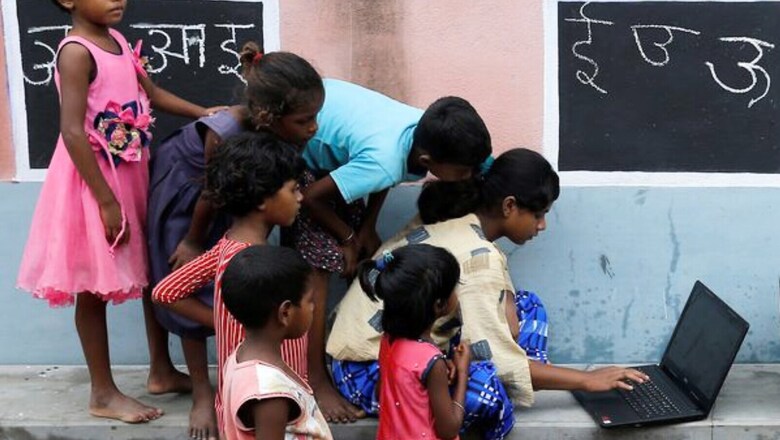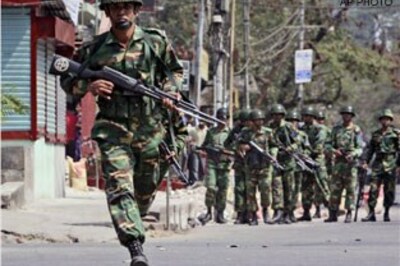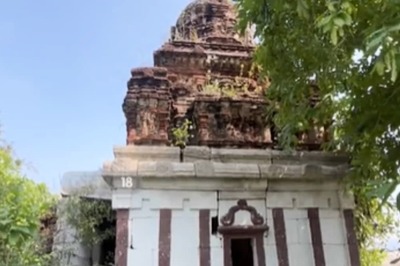
views
It is estimated more than 10 crore tribals are there in India. Around 1635 tribal languages are spoken and in use, out of which 197 are endangered. National Education Policy (NEP) 2020 recommends at least up to the sixth standard, tribal education shall be in their own respective mother tongue. Some states like Odisha, Chhattisgarh, Jharkhand, and Madhya Pradesh have prepared textbooks in some major tribal languages, trying to impart education in their mother tongue, but there is no big success rate available. Tribal development through education is a challenge in India. As compared to the 73 percent literacy rate of the general population, the tribal literacy rate is only limited to 59 percent as per the Census of India, 2011. It points out the importance of developing the conditions of tribal education for comprehensive tribal welfare.
The NEP says that the government should extend residential school facilities for tribal children to increase admissions in the education sector along with separate girls’ and boys’ schools and hostels, continuous languages, communications, mathematics, and science training for these students. The Government of India in the year 1997-98 proposed 689 Eklavya Model Residential Schools to be opened for tribal students in the country. 503 schools were sanctioned in the same year out of which 401 schools are currently functional. Out of the sanctioned schools, presently 288 are non-functional. Before that, Ashram schools were there to impart tribal education from 1990-91. Now, a total of 1205 Ashram schools have been sanctioned in India out of which 1018 are in functional condition. It indicates the progress in the education level of Tribes. The Indian government is funding both Ashram Schools and Eklavya Residential Model Schools (EMRS) for quality education and inclusive development of Scheduled Tribes (ST) children. A total of 1,09,618 students are studying in EMRS, out of which 55,621 are boys and 53,994 are girls, along with three transgender students. The total staff required for one EMRS school is 52, out of which 30 must be teaching staff and the remaining 22 comes under the category of non-teaching staff. The teaching staff consists of one principal and vice-principal, 12 post-graduate teachers, 12 Trained Graduate Teachers (TGT), one Arts teacher, one music teacher, and 2 physical education teachers. According to this structure, the total number of teachers required is 11,340. A total of 6,989 teachers are currently employed out of which 70 percent of them are on a contractual or deputation basis. Among the total staff, 4,430 are teaching staff while the remaining 2,559 are non–teaching staff. To eradicate this problem, the government has proposed 6,300 new teaching posts, of which 3,400 appointments are under process. Apparently, only 46 EMRS schools have their own buildings. For the holistic development of the tribal children, 51 more schools have been proposed by the government, making a total of 740 schools.
The Union Budget 2023-24 is a stepping stone in the field of tribal welfare approach. The Government of India has thoroughly focused on tribal education as well as tribal health and infrastructural development in the recent budget. 38,800 teachers and support staff will be recruited for Eklavya Residential Model Schools. A total sum of Rs 15,000 crore has been allocated for the tribal development mission, which is five times higher than previously allocated amounts. This budget has been specially granted keeping in mind the 75 Particularly Vulnerable Tribal Groups (PVTGs).
Tribal welfare is the most comprehensive and dynamic aspect that needs more attention. Budget 2023 has made a good effort by allocating financial resources for the upliftment of the tribal community, particularly under Pradhan Mantri PVTG. Nearly 31,000 villages across India are going to be benefitted from this initiation of the government. It is highly notable that the budget allocated under the Tribal Sub-Scheme (TSS) is significant in providing housing, portable drinking water, enhanced education, health care facilities, nutrition, telecom connectivity, road, and sustainable livelihood. Health is the most important area that promotes the life expectancy of people. In tribal areas, health issue like sickle cell anaemia is the most common and rampant prevailing disease. Finance Minister Nirmala Sitharaman highlighted that nearly 70 million people, from the age of 0-40 years in tribal areas, are going to be screened for this disease. The FM also announced her government’s plan to launch a mission to eliminate sickle cell anaemia by 2047. “It will entail awareness creation, universal screening of seven crore people in the age group of 0-40 years in affected tribal areas and counselling through collaborative efforts of central ministries and state governments,” she said. Thus, Budget 2023-24 has made remarkable provisions regarding sustainable tribal development across the country. Further, it will add more value and scope in the near future for tribal-oriented welfare schemes.
The author is Vice–Chancellor, Central Tribal University of Andhra Pradesh. Views expressed are personal.
Read all the Latest Opinions here




















Comments
0 comment